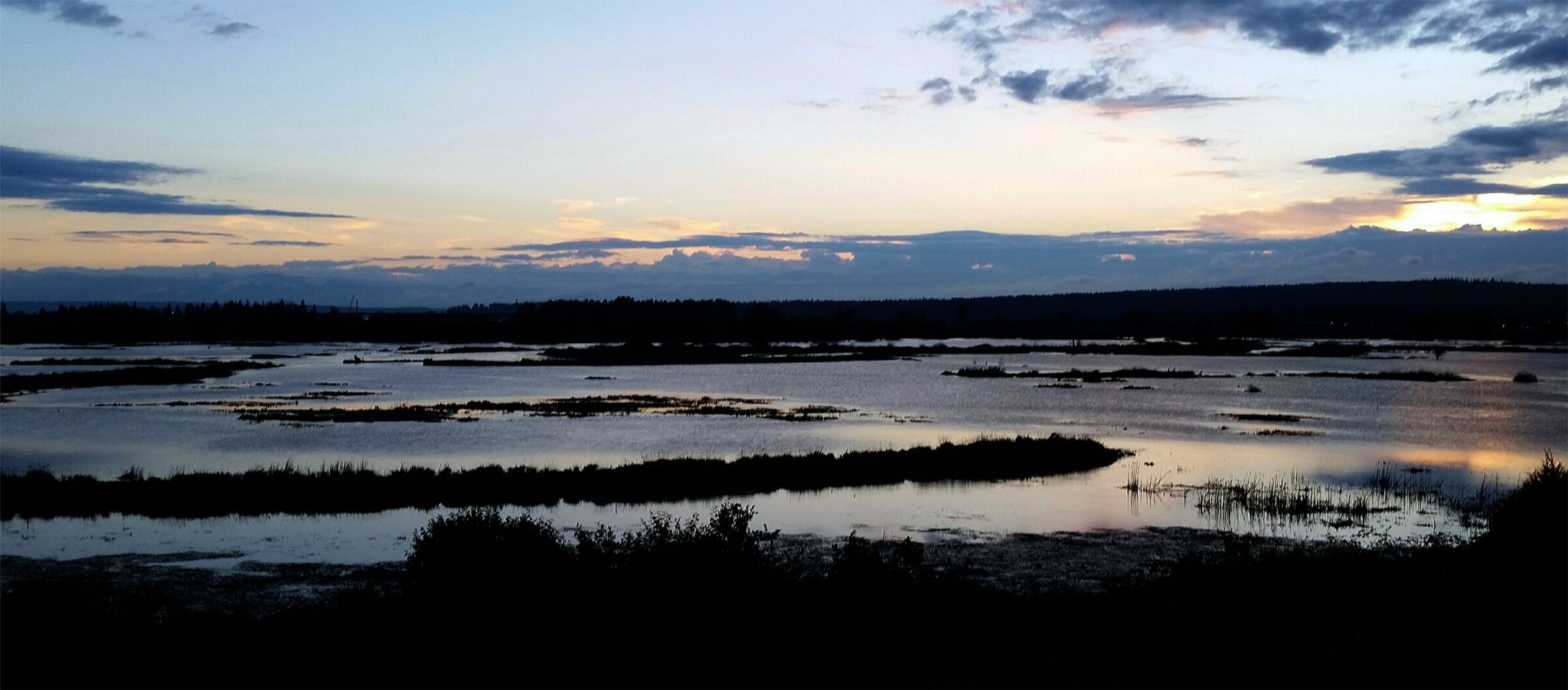MARYSVILLE – The Tulalip Tribes’ $20 million, 350-acre Qwuloolt Restoration Project was a huge success in restoring fish habitat.
For that effort, the tribe received an “improving” mark from the Northwest Indian Fisheries Commission in its State of Our Watersheds Report.
The 400-acre Spencer Island Project of 2009 and the planned 326-acre Smith Island Project to be completed in spring of 2017 add to that success.
“The Snohomish Estuary is well on its way to meeting the 10-year restoration targets set in the Snohomish River Salmon Recovery Plan,” the statewide report says.
The Stillaguamish Tribe near Arlington also received a high mark, for improving more than 1,000 acres for commercial shellfish growing. That is in addition to 1,800 acres upgraded in 2010 at Port Susan.
Unfortunately, there were declines in other key environmental indicators, the report says.
Kurt Nelson of the Tulalip Tribes said the reasons are many.
“Restoration is not keeping up with losses,” he said, adding when the goals were first set experts had no idea how hard it would be just to maintain the status quo.
Nelson said the goals are attainable, but it would take many factors.
One would be agencies doing a better job of enforcing regulations.
For example, one of the goals is to reduce the number of wells in basins that are closed for such activity. However, because of demands of development and growth, the Department of Ecology continues to allow wells to be drilled in such areas.
Another need is for agencies to change some laws.
For example, when a new development is built, there is a law that there can be no net loss of habitat. But there is no such requirement on existing developments that are redeveloped. Nelson said that needs to be re-evaluated.
Also, agencies need to work together.
Such as the French Creek Dike District. The tribe would like a pump station removed for better fish passage, but that isn’t feasible, Nelson said. Nearby farms depend on it for flood control. But the fish ladder could be improved there.
Another area with similar issues is the upper Pilchuck River. Opening up that area would bring in more Chinook and steelhead salmon. An improved fish ladder also would help there. The tribes also are working with Department of Transportation on blocked culverts that hurt habitat for juvenile salmon.
He said the targets are more like directions tribes need to go to improve habitat. But there is not enough money or people to get all the work done.
Regarding the Qwuloolt Estuary, it has recovered well since the dam was breached almost a year ago. They have found Chinook salmon along with chum and some flounder and even juvenile anchovy. Wildlife such as heron and eagles have returned, along with vegetation, such as cattails. Berms that were built up to keep waves down has turned into nesting places for some bird species. Sitka spruce trees may be planted on the berms to keep them stable.
Nelson said recreation on the estuary takes planning. To kayak, for example, go at high tide, and you “can go all over the place.” But when the tide goes out, head to one of the channels or you will get stuck.
It is especially smart to stick to the east side at Jones Creek. “It drains most of the site,” Nelson said. “It’s an extreme channel change at high velocity.”
Report highlights
•For the Tulalip Tribes, the recovery plan sets a target of one mile of restoration along the Snohomish marine nearshore. As of 2013, only .2 miles of restoration had occurred. Regarding the floodplain, the commission recommends removal of two pump stations to provide up to more than 100 miles of habitat for fish. Also, the salmon conservation plan recommends a 65 percent forested, 150-foot riparian buffer on both sides of fish habitat streams. However, such forest only cover 49 percent, down 1 percent from 2006.
Also in the report, since 2010 the number of culverts blocking or impeding fish has increased from 50 percent. The trend also has continued with 33 percent of the 298 water wells developed since 2010 completed within seven closed watersheds. Also, except for the Tulalip Reservation, forest cover was decreasing or staying the same. And, from 2007-15, 3,167 acres were converted out of forest practices. Also, in 2011, every urban stream was degraded, based on impervious surfaces levels greater than 12 percent.
•For the Stillaguamish Tribe, only 150 acres, or 27 percent, have been restored out of the 548-acre goal for estuary habitat. Also, 945 acres were converted out of forest practices. Riparian forest cover is unchanged since 2006 at 23 percent, with the goal being 80 percent. Only 22.3 percent of a targeted 30 acres of floodplain had been restored. There has been a 24 percent increase in wells in the watershed from 666 in 2009 to 827 in 2013.
And, long-term increases in rainfall, and decreases in snowfall, mean spawning chinook have a 50 percent chance, rather than a 10 percent, of being exposed to peak flows that correspond to egg to fry survival rates.



